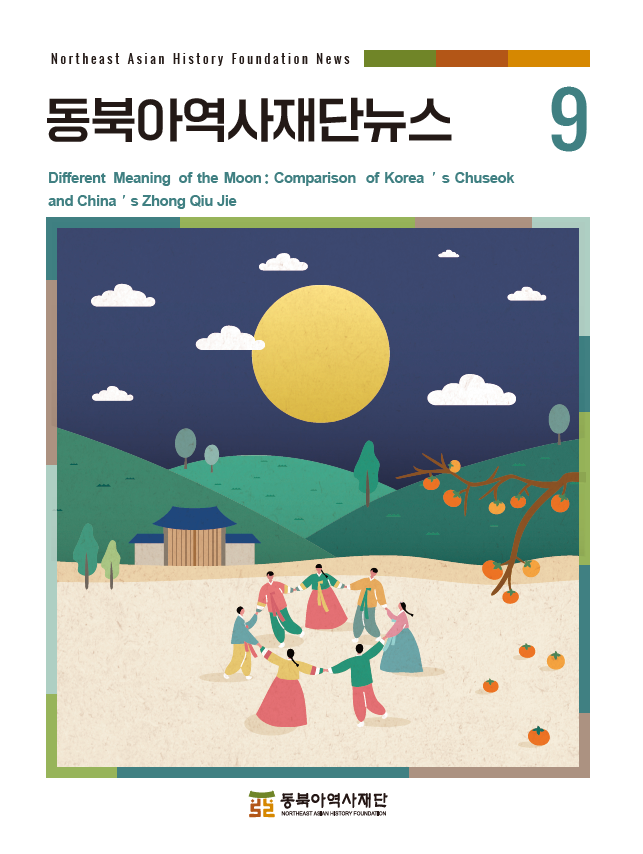NORTHEAST ASIAN HISTORY FOUNDATION 09/2023
the Cover
Korean Thanksgiving Day, namely Chuseok, has begun earlier than Chinese Mid-autumn Day, Zhong Qiu Jie. So, could Zhong Qiu Jie have originated from Chuseok?
During Chuseok, people perform ancestral rites by offering half-moon rice cakes made from newly harvested grains. In addition, various celebrations for a bountiful harvest take place, such as Ganggangsulae, a play of feeding a cow costume, bullfighting, cockfighting, and a play of a straw turtle. Korea’s Chuseok emphasizes ritualistic celebrations for a bountiful harvest, and appreciating the moon is a side event.
In contrast, the key focus of China’s Zhong Qiu Jie is ancestral rites related to the moon. Altars are set up around the moonrise, and children offer sacrifices to the rabbit grandfather on the moon. These customs are not found in Korea’s Chuseok. As traditional holiday food, people share mooncakes. Chuseok and Zhong Qiu Jie have distinct origins, purposes, and contents. The way Koreans and Chinese perceive the moon differs from each other.
The user can freely use the public work without fee, but it is not permitted to use for commercial purpose, or to change or modify the contents of public work.




